Electric Three-Wheeler Scene Is Turning Exciting In India
- By Bhushan Mhapralkar
- September 29, 2023

There are about 51 electric three-wheeler manufacturers in India as per the data of the Ministry of Corporate Affairs. Of this a good number of companies could be termed as startups. They are young and dynamic. They are technologically very well oriented and belong to the 400 startups that are estimated to be currently operating the auto sector.
Perhaps the most vibrant and diverse with a unique mix of entrepreneurs and technologists as part of the core team, the electric three-wheeler manufacturers seem better poised to grow because of their ability to understand and address the various segments on the passenger side as well as the cargo side.
There’s competition from the unorganised sector, the products of which – mainly catering to last mile passenger segments – are found in many cities of North India such as Amritsar and old parts of Delhi.
To add excitement to an already happening category in the Indian automotive market, US-based Biliti Electric Inc (Biliti) will conduct ‘ground breaking’ ceremony for its electric three-wheeler plant on the road that connects Hyderabad and Zaheerabad on 05 October 2023.
A young company that was founded in 2021 in California, Biliti is a growing global mobility player guided by a clear mission to provide smart, efficient and affordable electric mobility solutions, as per the description on its website.
Buoyed by the rising preference for electric vehicles and the way they seem poised to shape urban mobility and the cities of tomorrow, the American company engaged in the development of future-proof technologies will produce 240,000 units every year, according to sources aware of the development. The current plan is to make electric three-wheelers, they add.
Stating that the plant would be the world’s largest of its kind, the sources mention that the investment towards it is roughly USD 150 million. The ‘ground-breaking ceremony’ will be done at the hands of the Telangana Chief Minister K C Rao in the presence of government officials and members of the senior management of the company, the sources inform.
While the Biliti factory in Telangana is expected to provide employment to 3,000 people, it is also indicative of how the manufacturers are finding it worth making electric three-wheelers rather than electric two-wheelers or electric four-wheelers. The target audience or buyer/operator of a three-wheeler is grounded and knowledge enough to understand that suits his application needs in terms of the TCO, mentioned an industry observer. IT is therefore that companies like Omega Seiki, Euler and Altigreen has chosen to build electric three-wheeler over other types of electric vehicles, he added.
The B2B nature of electric three-wheeler business is perhaps the reason why so many unorganised players are a part of it, albeit at a different level. Many of them are job shops with far less investment than the startups.
The legacy players in the electric three-wheeler market and figuring in the list of SIAM (Society of Indian Automotive Manufacturers) are of the deep pocket variety. Those such as Bajaj Auto Ltd, Mahindra Electric (an arm of Mahindra & Mahindra) and TVS Motor Company are well diversified and technologically well entrenched. They are also well entrenched in areas like supply chain, manufacturing infrastructure and abilities, etc.
If the lower entry barrier in the EV space has attracted new and young players in the three-wheeler category, the legacy players are fast closing the gap. It is somewhat like what is happening in the electric two-wheeler space, the industry observer mentioned. He drew attention to how white spaces or segment gaps in this space are also being plugged.
Manufacturers like Tata Motors and Ashok Leyland are offering electric four-wheel light trucks to change the dynamics of the electric three-wheeler market the way it happened with the launch of the Tata Ace in 2005, he explained.
The competition is turning complex and it is essential therefore that electric three-wheeler manufacturers up the ante by employing more advanced technology; by offering superior TCO than their vehicles currently offer and give more bang for the money that the buyer is ready to pay them.
Among the young electric three-wheeler manufacturers, the likes of Altigreen, E-Trio, Omega Seiki and Euler Motors seem to be better placed to sustain and grow despite the competition from legacy players. The game seems to be about who offers the best TCO with the aid of technology. Incentives don’t seem to be a helping only to a point after looking at how the FAME Phase II policy was restructured for electric two-wheelers a few months ago.
The Government is keen to make electric vehicles in the country grow but does not seem to be in favour of much incentivisation like China did to make its EV industry rise. The PLI scheme for batteries is a welcome initiative though.
The effect of restructuring the subsidy for electric two-wheelers is not hidden. Their sales over the last few months have very well indicated it. The effect may be temporary, the fact is the Indian vehicle buyer is highly cost conscious.
The TCO factor matters most in the case of electric three-wheelers therefore. It is either the deal maker or deal breaker. To ensure a superior TCO is absolutely necessary. A lot of homework in this direction is yet to done.
The beauty is that some of the young and dynamic players have already acknowledged this and are silently working in that direction. They are leveraging the advantage of lower break even. The legacy players are well versed with the superior TCO factor and working in that direction too. The gap is expected to close between the legacy players and the young and newer players sooner than later. Such a development is already visible in the case of electric two-wheelers.
While technology, engineering, manufacturing, quality, durability, pricing, supply chain management and value chain management are some of the factors that will play a key role in shaping the future of electric three-wheelers, a prominent factor will be how co-operations work and are nurtured.
Co-operations will be extremely important for electric three-wheelers to succeed in a competitive market place where there is the pressure to reach the market early, stay exciting, frugal and technologically intensive.
While even the young electric three-wheeler companies have figured the art of sustenance and growth besides acquiring the necessary resources, engaging skilled manpower, supply chain partners and expanding their reach in the market, regulatory and technology changes will remain a constant.
The Government, it is clear, is looking at the EV industry to reduce tailpipe emissions. With companies such as BYD, Avatr and Changan of China set to flood the European markets with electric cars that are on par with what some of the best-known electric vehicle manufacturers like Tesla can offer at a price that is significantly lower, the unique status of the Indian EV market as the world’s largest micro mobility market in the making has the electric three-wheeler market in good stead.
The definition of electric micro mobility is defined as vehicles weighing less than 2.5-tonne. Most of the electric three-wheelers as the contributor to Indian EV market’s growth as the world’s largest micro mobility market are well defined in the last mile delivery segment as e-commerce players among others exert to reduce their carbon footprint. The excitement lies is what lays beyond the application areas that have already been addressed.
The semi-urban and rural markets are the ones that electric three-wheelers will next go to it looks like. As they do, yet another phase of strong growth and excitement will be unleashed.
Trinseo Launches Fourth-Generation Binder For The Next Wave Of EV Batteries
- By MT Bureau
- December 03, 2025

Trinseo has introduced its latest innovation, the Fourth-Generation SBR Binder Platform, designed to meet the evolving demands of electric vehicles and battery energy storage systems. This development reflects the company's strategic focus on delivering high-performance materials essential for the global shift towards sustainable energy.
The platform results from advanced polymer science and collaboration with battery manufacturers, targeting key industry requirements such as increased energy density, superior durability and more efficient production. It provides a significant improvement in peel strength, enabling stronger electrode bonds, thicker coatings and higher manufacturing speeds. These attributes are vital for developing higher-capacity batteries that can extend driving range and improve storage solutions.
The inaugural product, VOLTABOND 109 Latex Binder, offers this next-generation performance with broad compatibility across various anode materials and manufacturing processes. Its design ensures excellent stability and low resistance, supporting faster charging and long-term reliability. To ensure robust supply, Trinseo will produce the platform locally within major global regions, enhancing responsiveness to battery production hubs.
Rooted in decades of expertise, this new platform establishes a foundation for future innovations tailored to diverse customer needs across the battery value chain.
CATL And Stellantis Begin Work On EUR 4.1 Billion Spanish Battery Plant
- By MT Bureau
- November 28, 2025
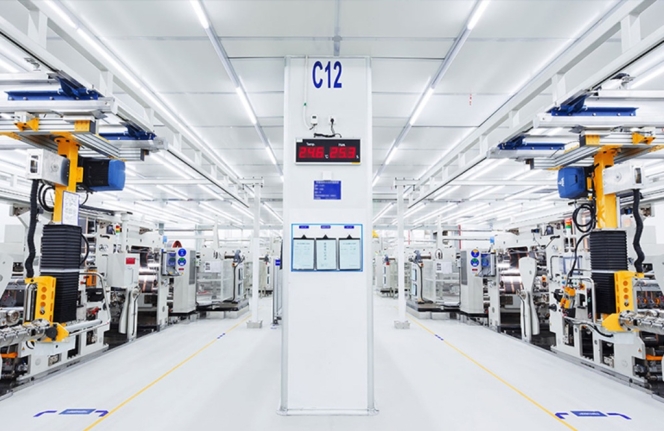
CATL and Stellantis broke ground on a EUR 4.1 billion battery plant in Figueruelas, Spain, on 26 November. The 50:50 joint venture will produce lithium-iron-phosphate battery cells and targets an annual production capacity of 50 GW/h.
The project, which is Spain’s largest battery factory, is backed by over EUR 300 million in EU funds, with production expected to start in late 2026.
According to unions, around 2,000 Chinese workers will help construct the site, a point of contention with local authorities and residents. Also, 3,000 Spanish staff are to be hired and trained later.
Spanish authorities and residents have voiced concerns about job opportunities for local workers and potential strain from the influx of foreign employees. CATL Vice President Meng Xiangfeng said earlier in November the company needed experienced technicians to build and fine-tune production lines, with plans to train local workers to take over operations gradually.
David Romeral, Director General of CAAR Aragon, a network of automotive businesses in the region, said: “We don’t know this technology, these components – we’ve never made them before. They’re years ahead of us. All we can do is watch and learn.”
The regional government is organising work permits for arriving workers while seeking to attract battery supply chain companies to Aragon. Some Chinese technicians and managers have already arrived, with several hundred more expected by year-end and nearly 2,000 by the end of next year.
CATL’s approach contrasts with its Hungarian site in Debrecen, where it hired mostly locals to build its European plant. However, a lack of local workers caused production to be delayed from late 2025 into mid-2026. The Figueruelas facility will serve as CATL’s third European manufacturing operation, alongside the Hungarian plant and one in Germany.
- Neuron Energy
- Equanimity Ventures
- Rajiv Dadlani Group
- Thackersay Family Office
- Chona Family Office
- Pratik Kamdar
- Rajesh Sehgal
- Rajiv Dadlani
Neuron Energy Secures INR 310 Million To Expand EV Battery Manufacturing For Four-Wheelers & Buses
- By MT Bureau
- November 27, 2025
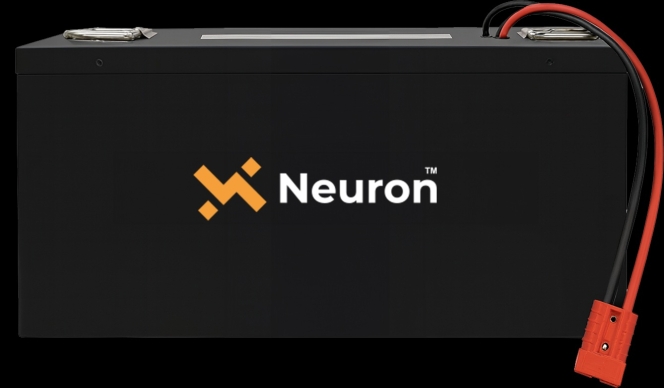
Neuron Energy, an EV battery manufacturer, has raised INR 310 million in a Pre-Series B funding round led by Equanimity Ventures, Rajiv Dadlani Group, Thackersay Family Office and Chona Family Office, with participation from Family Offices and HNI investors. With this, Neuron Energy has raised INR 810 million to date.
The funding will be used to expand Neuron Energy’s manufacturing capacity to 3 GWh and to establish a fully automated, large-scale battery facility for electric four-wheelers and buses at Chakan, Pune. The capital will also strengthen the company’s R&D capabilities, accelerate domestic growth, and broaden its footprint in international markets.
Pratik Kamdar, CEO and Co-Founder, Neuron Energy, said, “This Pre-Series B round is a defining step in our mission to industrialise world-class battery manufacturing in India. As EV adoption accelerates, we are focused on building capacity, embedding automation, and pushing the boundaries of performance and reliability. This investment ensures we can deliver at scale, both in India and globally.”
The company said it operates with a low-CapEx and low-OpEx business model. It has been growing profitably year-on-year and is on track to achieve INR 2 billion in revenue this year. The company is also confident of achieving sales of over INR 9 billion, with profitability, over the next few years.
Rajesh Sehgal of Equanimity Ventures, added, "We see immense potential in Neuron Energy’s approach to EV battery innovation and scalability. Their focus on quality, automation, and energy efficiency aligns with the evolving demands of the EV industry in India and beyond. We are proud to support their next phase of growth as they scale into new vehicle categories and manufacturing capacities."
The new facility reinforces the company’s position in two-wheeler EV batteries and signals a strategic entry into heavier vehicle segments. This supports Neuron’s vision to become a comprehensive EV battery solutions provider.
Rajiv Dadlani, from the Family Office of the Rajiv Dadlani Group, said, "Neuron Energy demonstrates remarkable potential to become the market leader, with their renewed focus, in delivering top-quality products. The company and its founders are highly committed to delivering rigorously tested and safe-to-use Li-Ion smart batteries. We are confident that they will continue to thrive and set new standards in the industry."
Mahindra Intros XEV 9S Electric 7-Seater SUV At INR 1.99 Million, Deliveries From 23 January
- By MT Bureau
- November 27, 2025
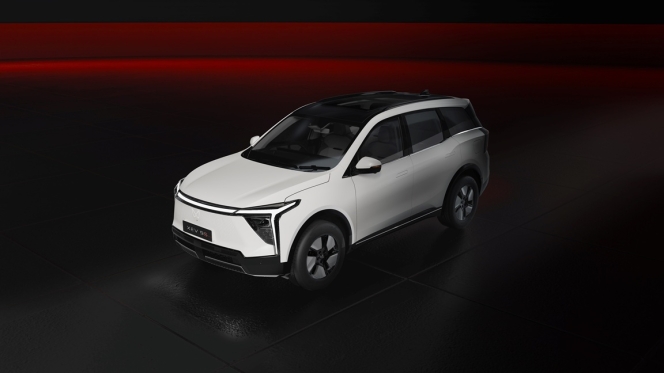
Mahindra has launched the XEV 9S, an electric 7-seater SUV built on the INGLO platform, with prices starting at INR 1.99 million (ex-showroom). The XEV 9S is powered by MAIA, described as India’s fastest automotive mind.
The EV comes with a 70 kWh battery, delivering a power of 180 kW and 380 Nm of torque. It offers a claimed real-world range of 500 km from its LFP battery, which comes with a Lifetime Warranty. The SUV is stated to be the fastest 7-seater in its class, reaching zero to 100 kmph in 7.0 seconds, with a 202 kmph top speed.
The fully-loaded Pack Three Above 79 kWh variant is priced at INR 2.94 million ex-showroom with bookings open on 14 January 2026 and deliveries starting on 23 January 2026.
R Velusamy, President - Automotive Business, Mahindra & Mahindra and Managing Director, Mahindra Electric Automobile, said, “We have always believed that technology is meaningful only when it expands human possibility. The XEV 9S built on the INGLO electric origin platform does exactly that by creatin space – more than anyone else and gives a smooth and noise free ride. THE MAIA brain enables many of its high-tech features, making it the most advanced offering for its price.”
Nalinikanth Gollagunta, Chief Executive Officer - Automotive Division, Mahindra & Mahindra and Executive Director, Mahindra Electric Automobile, said, “The future of Indian mobility will belong to brands that don’t just electrify vehicles, but reimagine categories. With the XEV 9S, we’re not just playing in the EV segment, we’re expanding it. This SUV signals the start of a BIG new electric era for Mahindra - one built on scale, on purpose, and on a deep understanding of how India moves. The attractive prices starting at ₹ 19.95 Lakh make a very high-tech product accessible, with bookings opening on Jan 14 and deliveries start on Jan 23.”
The XEV 9S is an expression of Mahindra’s Heartcore Design philosophy, featuring a stance, lines, a gloss finish and interiors. The vehicle is designed to be silent on wheels.
Key highlights include:
- Space: Offers 4,076-litre of cabin space (for front and second row), boot space up to 527-litre and 150-litre of Frunk space. The third-row features 50:50 split seats.
- Suspension: Features Intelligent Adaptive dampers with i-Link at the front and 5-Link independent suspension at the rear.
- Driver Aids: Includes L2+ ADAS with five Radars and one Vision Camera, Driver Drowsiness Detection with DOMS (Eyedentity) and Secure360 Pro for live view and recording.
- Interior Comfort: Features Powered Boss Mode, ventilated second row seats, recline and sliding adjustment, sunshade for second row windows, Acoustic ‘Laminated’ Glass and wireless phone charging.
- Technology: Equipped with Brake by Wire with IEB, High Power Steering with VGR, VisionX – AR HUD, AutoPark Assist, and 140 features including Digital Key, NFC and Charge Scheduler.
- Entertainment: Includes a 16-Speaker Harman Kardon Audio system with Dolby Atmos, three 31.24 cm screens, 5G Connectivity and Fun & Work Apps.
- Efficiency: Running costs are INR 1.2 per km, with maintenance costs of INR 40 paise per kilometre and negligible road tax. Business owners benefit from 40 percent depreciation.
Pratap Bose, Chief Design & Creative Officer - Auto & Farm Sectors, Mahindra & Mahindra, said, “Designing the XEV 9S wasn’t about adding lines to a surface, it was about shaping a feeling. We wanted it to feel like stepping into a personal sanctuary, yet one that carries the pulse of modern India. Electric gave us the canvas; INGLO gave us the freedom to sculpt light, space and comfort. The result is an SUV that wears its size with grace and its technology with humility. It’s expressive, it’s calm, and it’s unmistakably Mahindra - built for a nation whose aspirations are only getting bigger.”


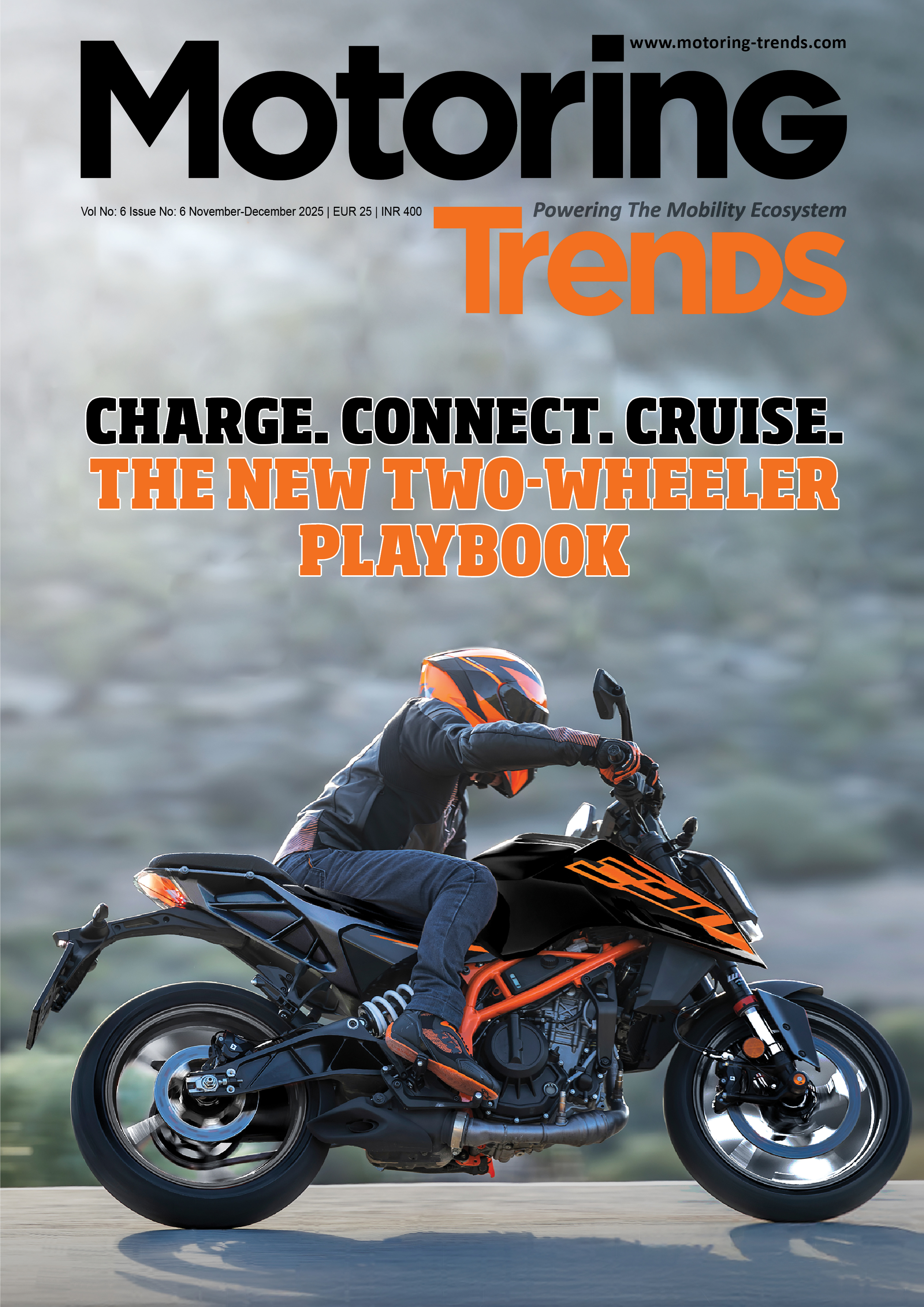

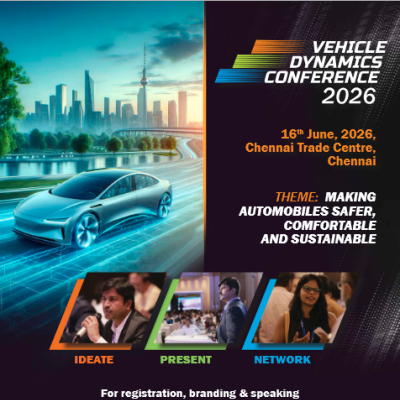
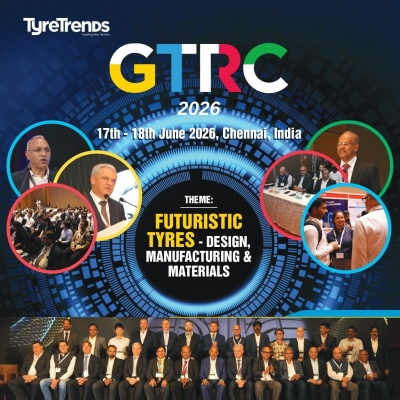
Comments (0)
ADD COMMENT